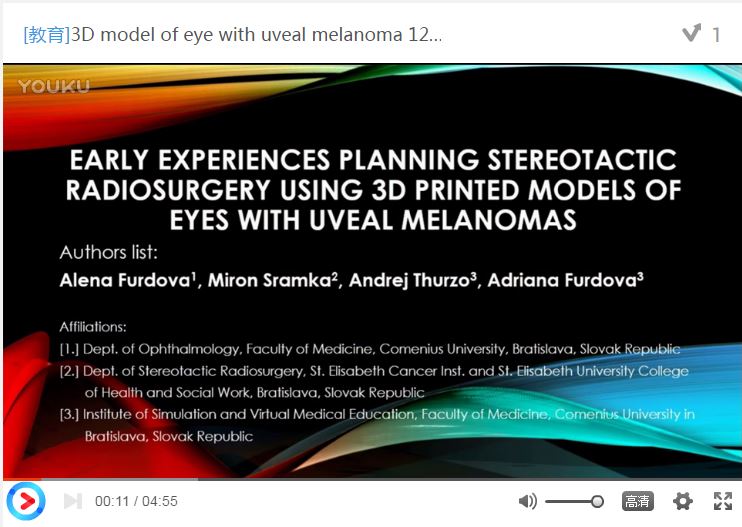9 0 6 7 6
论文已发表
注册即可获取德孚的最新动态
IF 收录期刊
- 2.6 Breast Cancer (Dove Med Press)
- 3.9 Clin Epidemiol
- 3.3 Cancer Manag Res
- 3.9 Infect Drug Resist
- 3.6 Clin Interv Aging
- 4.8 Drug Des Dev Ther
- 2.8 Int J Chronic Obstr
- 8.0 Int J Nanomed
- 2.3 Int J Women's Health
- 3.2 Neuropsych Dis Treat
- 4.0 OncoTargets Ther
- 2.2 Patient Prefer Adher
- 2.8 Ther Clin Risk Manag
- 2.7 J Pain Res
- 3.3 Diabet Metab Synd Ob
- 4.3 Psychol Res Behav Ma
- 3.4 Nat Sci Sleep
- 1.9 Pharmgenomics Pers Med
- 3.5 Risk Manag Healthc Policy
- 4.5 J Inflamm Res
- 2.3 Int J Gen Med
- 4.1 J Hepatocell Carcinoma
- 3.2 J Asthma Allergy
- 2.3 Clin Cosmet Investig Dermatol
- 3.3 J Multidiscip Healthc

Early experiences of planning stereotactic radiosurgery using 3D printed models of eyes with uveal melanomas
Authors Furdová A, Sramka M, Thurzo A, Furdová A
Received 1 October 2016
Accepted for publication 17 November 2016
Published 31 January 2017 Volume 2017:11 Pages 267—271
DOI https://doi.org/10.2147/OPTH.S123640
Checked for plagiarism Yes
Review by Single-blind
Peer reviewers approved by Dr Amy Norman
Peer reviewer comments 2
Editor who approved publication: Dr Scott Fraser
Objective: The objective of this study was to determine the use of 3D printed model
of an eye with intraocular tumor for linear accelerator-based stereotactic
radiosurgery.
Methods: The software for segmentation (3D Slicer) created
virtual 3D model of eye globe with tumorous mass based on tissue density from
computed tomography and magnetic resonance imaging data. A virtual model was
then processed in the slicing software (Simplify3D®)
and printed on 3D printer using fused deposition modeling technology. The
material that was used for printing was polylactic acid.
Results: In 2015, stereotactic planning scheme was optimized with
the help of 3D printed model of the patient’s eye with intraocular tumor. In
the period 2001–2015, a group of 150 patients with uveal melanoma (139
choroidal melanoma and 11 ciliary body melanoma) were treated. The median tumor
volume was 0.5 cm3 (0.2–1.6 cm3). The radiation dose was 35.0 Gy by 99% of dose
volume histogram.
Conclusion: The 3D printed model of eye with tumor was helpful in
planning the process to achieve the optimal scheme for irradiation which
requires high accuracy of defining the targeted tumor mass and critical
structures.
Keywords: 3D
printing, uveal melanoma, stereotactic radiosurgery, linear accelerator,
intraocular tumor, stereotactic planning scheme
摘要视频链接:3D model of eye with uveal
melanoma
